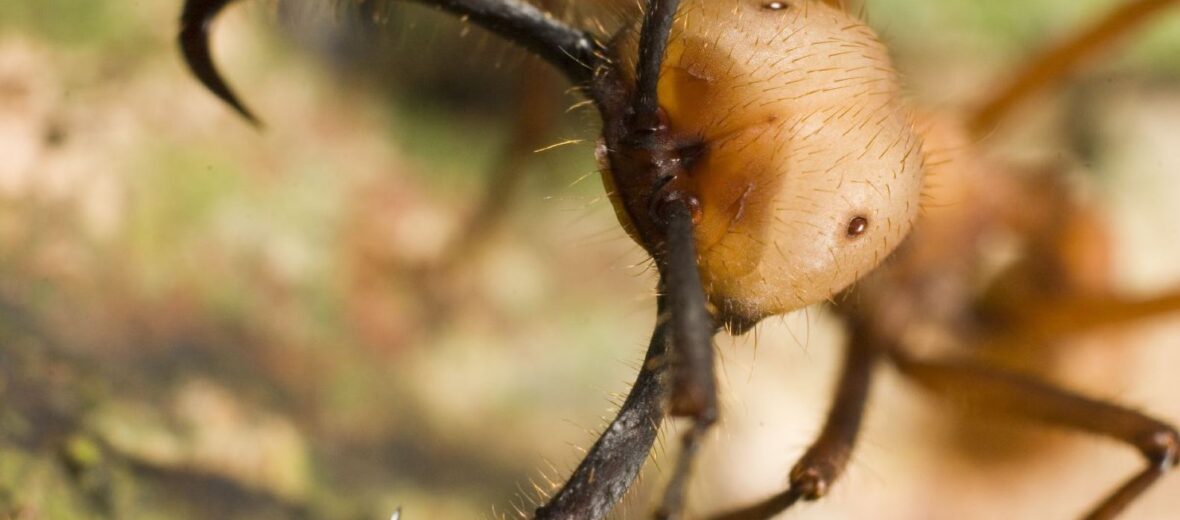
These are the classic Amazonian army ants, infamous for massive and defensive swarm raids. Like all army ants, this species is nomadic. They are like little pillaging hordes of bloodthirsty barbarians, with a voracious appetite for nearly anything that stands in their way. Their namesake stems from their behavior of several thousand swarming ants hunting for food. They swarm and attack their prey until it is eventually overwhelmed and dies. It is then ripped apart, piece-by-piece, and taken back to the hive.
First the Stats…
Scientific name: Eciton burchellii
Weight: Collectively, they can weight up to 45 lbs.
Length: Up to .40 inches
Lifespan: Up to 1+ years. Queens live up to 30 years!
Now on to the Facts!
1.) These ants are also known as ‘legionary ants’, ‘driving ants’, or ‘visiting ants’ because they pass through but don’t stay. They invade an area like a swarm of locusts and wipe out any living creature in their path.
2.) There are about 12 thousand identified species of ants, but only about 200 are termed “army ants”.
3.) Army ant hunting groups, called swarm raids, can contain 200,000 – 20 million ants that encompass a 15 – 110 yard radius!
4.) What’s really fascinating is that, as these ants attack their prey, they secrete a special digestive enzyme that breaks down the tissue of their prey for faster consumption. But this takes place while their prey is still alive!
5.) Army ants build temporary nests out of their own bodies called a bivouac. Clinging onto each other using special hooks and spines on their feet and their mandibles. Performing this feat the ants form a living nest, complete with walls and tunnels.
But wait, there’s more about army ants!
6.) Army ants kill and eat thousands of prey a day. They tear through insects and spiders, but they also kill small, reptiles, amphibians, and mammals. Due to their team effort they can kill large animals like snakes, chickens, and will even raid bird nests.
7.) The soldiers are larger than the workers, and they also have much larger mandibles than the worker ants.
Did you know…?
A single queen can produce 3 – 4 million eggs a month!
8.) Males are born as part of a sexual brood. As soon as they are born, they fly off in search of a queen to mate with. In some instances males will look for a queen from an existing colony, the workers will forcibly cut off his wings in order to welcome the large males into the colony for mating. Because of their size, males are sometimes called “sausage ants” or “sausage flies”.
9.) The queen is dichthadiigyne – a blind ant with a large gaster (enlarged part of the abdomen behind the pedicel) but may sometimes have small, partially functional eyes.
10.) Typically, if the queen dies, the colony will usually die too.
Now a Short Army Ant Video!
Also, check out the Critter Science YouTube channel. Videos added frequently!
Want to suggest a critter for me to write about? Let me know here.



